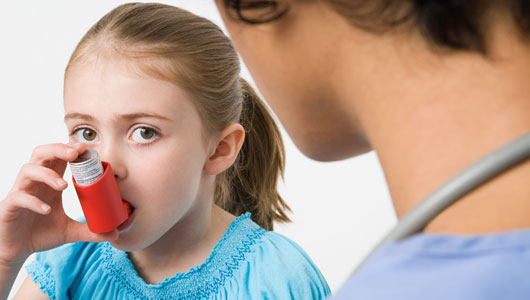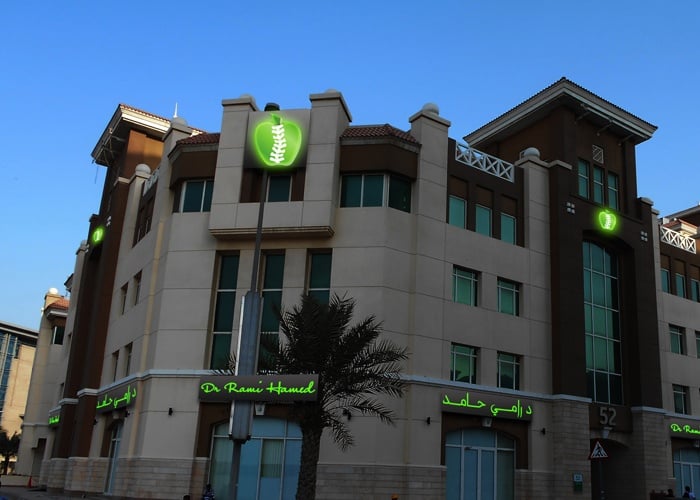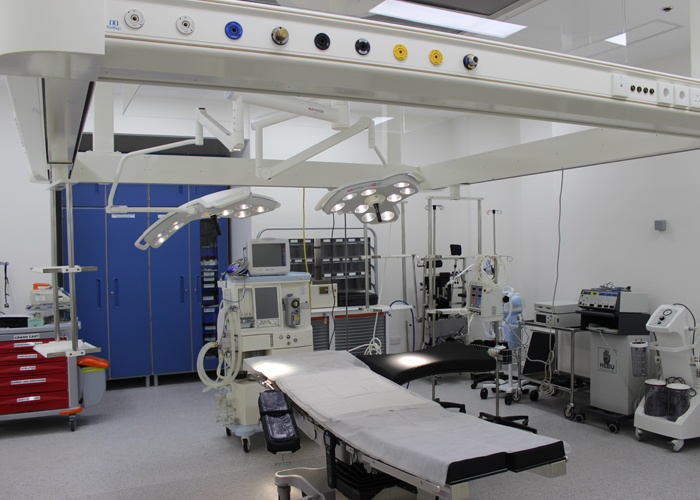Wheezing in Children - Dubai Pediatric Clinic
Wheezing in children is a common problem. Approximately 25-30% of infant will have at least one wheezing episode and one of half of children has a history of wheezing by 6 years of age.
Wheezing is a high- pitched whistling sound. During breathing it occurs when air moves through narrowing breathing tubes in the lungs. Wheezing is a sign that a child may have breathing problems.
The most common cause of wheezing in children includes asthma, allergies, infection, gastroesophageal reflux and sleep apnea.
ASTHMA
Asthma is a chronic inflammatory disorder of airways characterized by an obstruction of airflow.
Signs and symptoms:
- Wheezing, cough especially at night, and shortness of breath
- By examination: increased respiratory rate, retractions, increased heart rate, wheezing, prolonged expiratory phase, decreased oxygen saturation at room air.
These signs and symptoms are recurrent and the case is classified as mild, moderate or severe according to the severity of signs and symptoms; intermittent or persistent according to the recurrence of these symptoms in children who have sensitive airways. Asthma symptoms can be triggered by breathing in a substance called allergen. Common factors that trigger include animal hair or dander, dust, aspirin, cold weather, chemicals, tobacco smoke, exercise, strong emotions, and viral infections.
Asthma can be diagnosed by history; physical examination and pulmonary test function, after excluding other causes of recurrent wheezing.
Treating asthma involves both preventing symptoms and treating an asthma attack.
Quick relief medications can quickly open swollen airway as a -
- short acting beta agonist (albuterol and levabuterol) – these medications act within minutes and effects last several hours. It is used in asthma exacerbation episodes.
- Ipratropium (Atrovent) – your Doctor might prescribe this inhaled medication for immediate relief of symptoms
- Oral or intravenous corticosteroids – these medications relieve airway inflammation caused by asthma
- Immunomodulatory agents; omalizumab - maybe appropriate for children with severe Eosinophilic asthma
Treatment of allergy induced Asthma:
- Omalizumab: for child with allergies and severe asthma
- Allergy medication: nasal spray antihistamines; decongestants; and corticosteroids; Cromolyn and Ipratropium nasal spray
- Allergy shots: immunotherapy injections once a week for a few months of 3-5 years that gradually reduce your child immune system reaction to specific allergen
Long term control medication
- Inhaled corticosteroids: (Fluticasone, Budesonide)
- Leukotriene modifiers (Singulair)
- Combination inhalers (Corticosteroids + Long acting beta agonist; Fluticasone + Salmeterol)
- Theophylline
Inhaled medications in asthma needs inhaled devices. In babies we use a nebulizer and in infants and toddlers, we use a face mask attached to metered dose inhaler. Older children can use inhaler that release a fine powder. Treatment plan differs from another child to other. Your child doctor can give you the appropriate plan to control asthma.
The goal of asthma treatment is to keep symptoms under control all the time. Well controlled asthma means that your child has -
- Minimal or no symptoms
- Few or no asthma flare
- No limitation on physical activities or exercise
- Minimal use of quick relief inhalers such as albuterol
- Few or no side effects for medications
WHEEZING IN INFANT
When your baby has a respiratory illness, his baby sized airway is filled with mucus and this can lead to wheezing. When a baby has bronchiolitis, which is caused by viral infection (RSV), tiny airways swell and make it difficult for a baby to breath and can be life threatening if not treated.
Baby with bronchiolitis has wheezing, rapid breathing, cough and fever. If a child eats and sleeps well, we just observe the case and in severe cases, a baby may need hospitalization, hooked on oxygen, IV fluids, and inhaler medication by nebulizer may also be prescribed.
Babies with cow’s milk allergy may have eczema, vomiting, diarrhea and wheezing. These symptoms appear immediately within 2 minutes or up to 2 hours after having a small amount of cow’s milk and diagnosis is usually obvious.
Some babies have these symptoms hours or up to several days after having cow’s milk and here the diagnosis is not obvious and allergy test are often not useful in this case.
Treatment involves avoidance of dairy product and feeding the baby with extensively hydrolyzed formula or amino acid based formula.
GASTROESOPHAGEAL REFLUX DISEASE
This occurs when stomach contents leak back into the esophagus which causes the infant to spit up. The symptoms include cough after eating or feeding, crying, vomiting during the few first year of life, wheezing or other wheezing problems. In severe cases, the baby has weight loss, refuse feeding and slow growth.
The diagnostics tests are esophageal PH monitoring; X RAY of the upper gastrointestinal system after the bay drink special liquid called contrast.
To reduce the reflux:
- Burp the baby after drinking
- Add 1 teaspoon of rice cereal to 60 ml formula or use (AR) formula
- Hold the baby upright for 20-30 minutes after feeding
- Raise the head of the crib
- SEVERE CASES NEEDS SURGERY
HEART FAILURE
Baby with heart failure also may have wheezing with tachycardia and tachypnea. The doctor can diagnose these cases according to the physical examination, and this need urgent management and hospitalization.
OBSTRUCTIVE SLEEP APNEA (complete or partial)
The child has abnormal breathing during sleep, frequent awakenings, nightmares, enuresis, hyperactivity, daytime mouth breathing, and irregular sleep patterns. Management of this case is adenotonsillectomy.
FOREIGN BODY ASPIRATION
Many cases of foreign body are misdiagnosed especially when the event is not attended. When the child aspirate a foreign body (large size), he will have severe cough with breathing difficulty, but if small, it can pass till the right bronchi and with time the child will be having wheezing and asthma symptoms or recurrent infection.
Any child with asthma and is not responding to asthma medications should have many investigations, to exclude foreign body aspiration especially when wheezing is in one side of the lungs.
Some specific organisms like Chlamydia, Mycoplasma and Aspergillus can cause pneumonia and bronchopneumonia which can cause wheezing. There are other uncommon cause of wheezing such as congenital vascular abnormalities, cystic fibrosis, primary ciliary dyskinesia, tumor or malignancy and vocal cord dysfunction.
Medical history is important in the assessment of a child with wheezing. A family history of asthma, allergies, eczema can increase the suspicion of asthma. If the age of onset of wheezing is during infant stage, it is more likely to be caused by viral infection, reflux or cow’s milk allergy.
Sudden onset of wheezing suggests foreign body aspiration and if wheezing starts after feeding it suggest gastroesophageal reflux or food allergy.
Wheezing with breathing difficulty and recurrent respiratory infection with diarrhea and weight loss suggest cystic fibrosis.
By examination, the doctor can decide which tests the child needs to detect the cause and treatment of wheezing.
WHEN TO CONTACT A MEDICAL PROFESSIONAL
- If wheezing occurs for the first time
- With significant shortness of breath, and breathing difficulty
- Keeps occurring without explanation
- Caused by an allergic reaction
Dubai Pediatric Clinic at Dr Rami Hamed Center provides one of the leading pediatricians in Dubai.




.jpg?width=1080&height=1080&name=DR%20TAREF%20ALABED1%20(1).jpg)
.jpg?width=1080&height=1080&name=DR%20DANIA%20(1).jpg)



